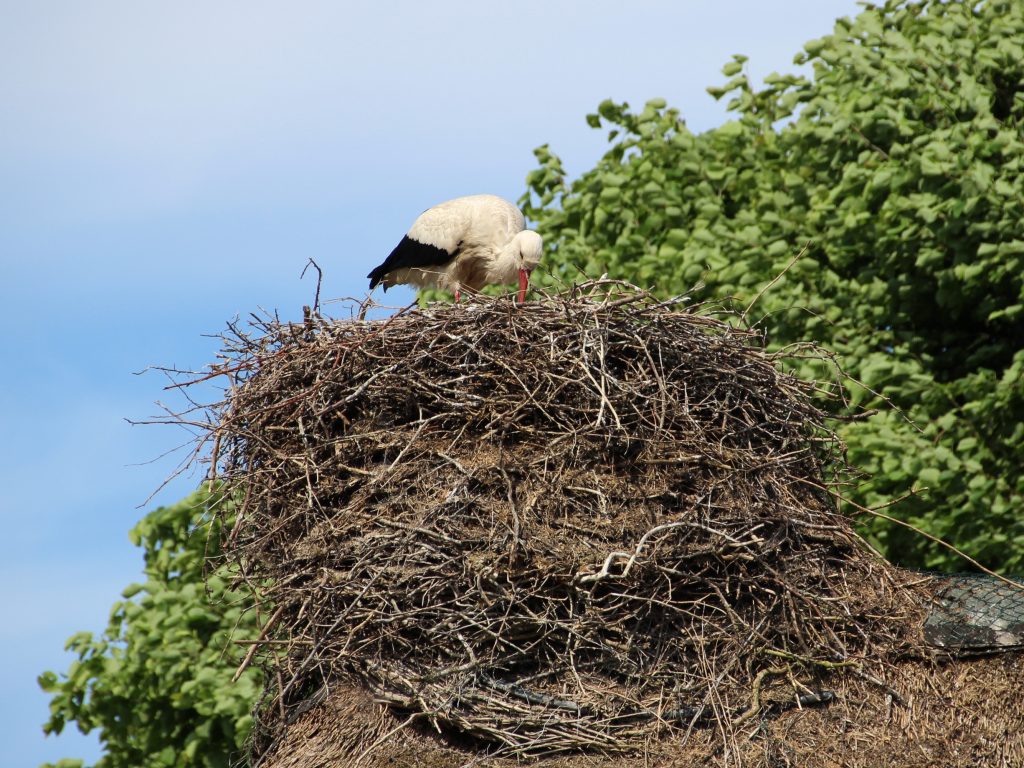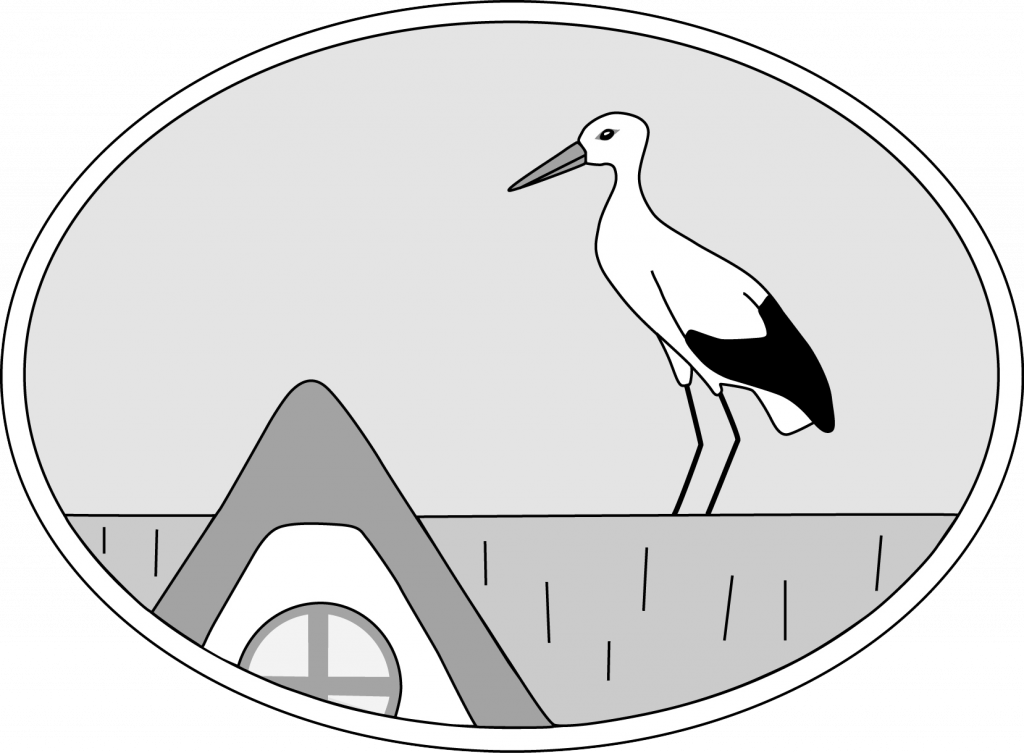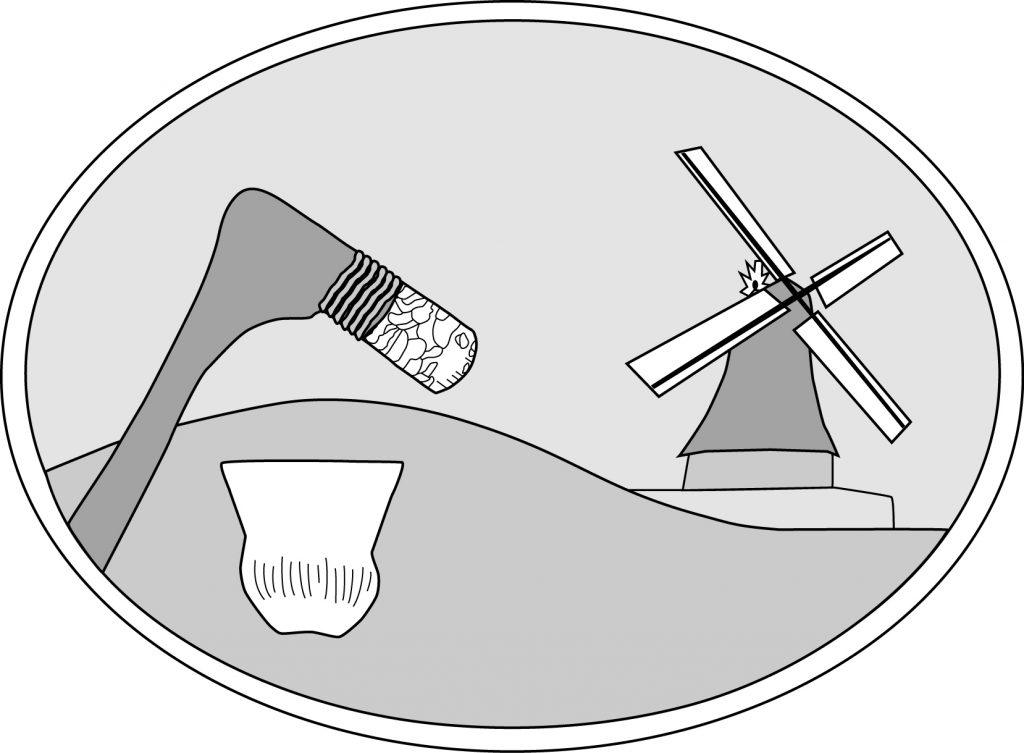
A pair of storks usually remains faithful to its nest for decades. The nest is continuously repaired over the years using branches, hay and straw. Nests can be up to two meters high and weigh several tons.
There is tough competition for the best nests, often resulting in fights and even fierce aerial battles. Although it is not usually assumed that storks lack suitable nesting sites, the erection of artificial nesting aids can promote the settlement of white storks.
Increasingly, unsuitable materials such as plastic are being found in nests. Plastic sheeting in particular can cause water to be unable to drain away, resulting in a “bathtub effect”. Such a build-up of moisture is dangerous for the little chicks, which become soaked and thus hypothermic. During the annual inspection of the nests, such foreign bodies are removed.
The cavities of the nest mesh also serve as nesting sites for smaller birds. A stork’s nest is often a veritable multiple dwelling. Frequent subtenants are house and field sparrows, wagtails or starlings, among others.



